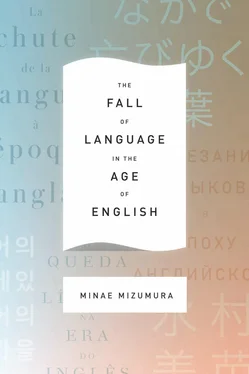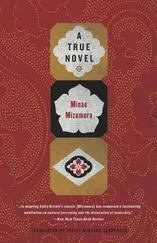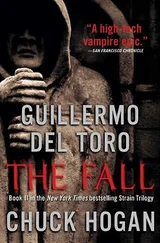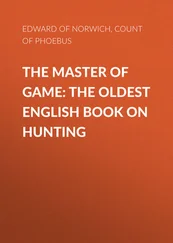And yet, despite his avowed distaste for the world of English letters, Sōseki’s own novels swiftly departed from Chinese tradition, coming more to resemble Western novels. The Poppy ( Gubijinsō , 1907), which he wrote shortly after leaving the university, was written with constant reference to an ancient anthology of Chinese poetry. Heavily Sinicized, classical, and ornate, it is also the work of Sōseki’s that was most popular during his lifetime. In contrast, his final, unfinished novel Light and Dark , written some ten years on, shows the greatest influence of the West both in its plot and in its use of language, one example of the latter being the repetitive use of personal pronouns equivalent to “he” and “she”—which, amazing as it may seem to Westerners, did not exist in premodern Japanese. The main character is a man about twenty years younger than Sōseki, someone who “could not read books dense with nothing but square, multistroke characters”—in other words, a man no longer capable of appreciating Chinese literature. While Sōseki’s own life was imbued with a deep familiarity with the Chinese Classics, he was well aware that a generation of Japanese quite different from him was emerging. And he is still read today precisely because, seeing the inevitability of that historical change, he wrote novel after novel for readers who, like his own protagonist, were losing touch forever with the Chinese literary tradition, with “books dense with nothing but square, multistroke characters.”
Indeed, Japanese readers today, including Sōseki scholars, mostly read Sōseki’s later novels. Those novels offer no clue about how closely entwined Sōseki’s life was to the Classical Chinese literary tradition, quite unlike the lives of today’s readers. While Sōseki was writing Light and Dark , after working in the morning he would spend his afternoons composing Chinese poetry to escape what he saw as the all-too-mundane world of the novel. During his lifetime, he not only wrote a considerable number of Chinese poems but, following the Chinese literati tradition, practiced calligraphy and painting as well (though his painting was not very good). Any Japanese museum-goer who encounters Sōseki’s Chinese calligraphy and poetry in the original is bound to be brought up short. Despite his beloved place in our hearts, despite his towering stature in Japanese literature, a portion of Sōseki’s oeuvre close to his heart is illegible to Japanese people today.
When I contemplate the distance between the literary culture that Sōseki lived in and our own, I am struck by the loneliness he must have felt. It is the loneliness of the writer who knows that his readers will never share the same world that he lives in, never share the same culture that he is part of. It is the very loneliness experienced to some degree by all Japanese people of Sōseki’s time.
In a public talk, “Gendai Nihon no kaika” (The development of contemporary Japan), Sōseki describes the cultural transformation Japan had to go through as a “sudden twist [ kyokusetsu ].” According to him, the development within the West was “internally driven,” that in Japan “externally driven.” He argues that although in the past Japan certainly developed under the influence of Korea and China, that influence was of a nature that prompted gradual, internally driven development. In contrast, the “shock of the West” experienced by modern Japan was of unprecedented magnitude, forcing on Japan a “sudden twist”:
From that moment on, Japan ’ s development took a sudden twist. It experienced a shock so great that it could not help but do so . To use the phrase that I used earlier, Japan until then had been internally driven but suddenly lost the power of self-determination and, pushed by external forces, had no choice but to do as it was told. .. Since Japan probably cannot exist as Japan without forever being pushed in the way it is today, there is no other way to put this than being externally driven. 7(Emphasis added)
Sōseki concludes in a slightly comical tone: “Call us unfortunate, call us wretched or what you will — we Japanese have fallen into one hell of a predicament.” But in fact, it was not only Japan that was forced to go through this type of “externally driven” development.
It was a drama that continued in all the non-Western regions throughout the twentieth century and that continues to this day. Since the fifteenth century, with the advancement of maritime technology, and on through the age of colonialism, externally driven development spread through the non-Western world and is now omnipresent under the name of “globalization.” Beginning over one hundred years ago, modern Japanese literature told this narrative from the non-Western standpoint — a narrative that will likely continue to be told in various parts of the world.
THE MIRACLE OF MODERN JAPANESE LITERATURE
What a fascinating body of literature emerged in Japan, though, precisely as a result of what Sōseki calls the “sudden twist”! The first prerequisite for fine literature is that the writer must see the language not as a transparent medium for self-expression or the representation of reality, but as a medium one must struggle with to make it do one’s bidding. Japan’s historical “twist” forced — condemned — Japanese writers to struggle with their language in ways they had never imagined. Using the tragedy of the twist as a launching pad to come up with a new language that could capture the new Japan, they traced their language back over a thousand years, examining each and every word as in a treasure hunt and exploring all the possibilities that the language possessed.
In the early years of modern Japanese literature, all writers — including those not endowed with a particularly great gift — were forced to address the issue of language. And in so doing, they produced a body of literature that often seems to transcend the individual writer — one in which layers of tradition sing in mesmerizing polyphony.
The new genbun itchi prose flourished in many variations. At one end of the spectrum, there initially was even a surge of heavily Sinicized writing, exuding manliness, which befitted the newly found ground for political discussion, heroically exhorting freedom and civil rights. At the other end of the spectrum were the writings based on hiragana — the “women’s hand”—where the use of ideograms was sparse; stylistically these ran the gamut, by turns feminine, innocent, elegant, colloquial, or vulgar, often treating the imported concept of romantic love. Whether it took the form of a novel or an essay, all prose could draw from the various tones in between these disparate styles. There was also a brief reaction against the genbun itchi movement, reviving the language of the literary height of the Edo period — the seventeenth-century Genroku era — and reconnecting readers to that bygone era in a new way.
Poetry thrived, too. Stimulated by the genbun itchi prose, which aspired to realism, both waka and haiku poetry also tried to depict the “real,” rather than engage in intertextual play with tradition, and in doing so experienced a golden renaissance. Free verse joined the parade. Katakana, which had been closely associated with Chinese characters, came almost overnight to represent the sounds of Western loanwords, transforming itself into a chic set of letters that reeked of the West. The more one sprinkled Western loanwords using katakana in one’s writing, the more modern one sounded. Meanwhile, translations of Western works ended up with a marked style, often quite distinct from that of works written originally in Japanese; even today when Japanese read translations, they tend to shift modes of reading, like a driver shifting gears at the wheel of a car. I know of no Western literature that has mixed such a diverse array of writing systems and literary traditions and, moreover, so clearly retained the historical marks of each of them, so that layers of different heritages are visible on almost every page.
Читать дальше












